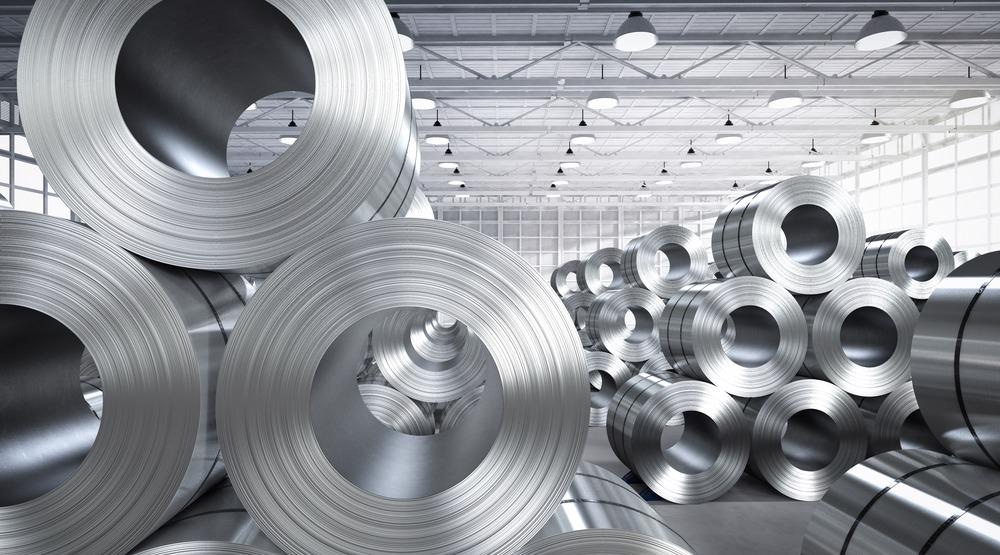Climate change is a global challenge being fought on several fronts. The core focus is on reducing harmful and toxic greenhouse gas emissions. Gases such as carbon dioxide and methane create a protective blanket around the Earth and prevent heat from escaping, triggering rising temperatures globally.

Shape memory alloys offer a game-changing solution to harmful refrigerants. Image Credit: Phonlamai Photo/Shutterstock.com
Improving how we generate and use energy is also high on the agenda, and in recent years we have seen a boom in research dedicated to renewable energies, specifically improving conversion efficiency and developing new ways of storing excess energy when generated.
Steps to mitigate climate change also include reducing emissions from refrigerants such as chlorofluorocarbons and hydrofluorocarbons – which are 13,000 times more potent to the environment than carbon dioxide – and improving the efficiency of heating, cooling, and refrigeration systems.
Tackling this challenge is Irish clean technology company Exergyn, a pioneer in the commercial-scale application of shape memory alloys or SMAs. These shape memory alloys are a game-changing means of cooling and heating that can eliminate the release of harmful refrigerants into the atmosphere across several industries.
What are SMAs?
Most of the world’s refrigeration and heating, ventilation, air-conditioning and refrigeration (HVACR) systems have used vapor compression cooling, which releases harmful chemical refrigerants such as HCF-134c into the environment.
However, the last decade has seen the emergence of solid-state elastocaloric (or thermoelastic) cooling as an alternative heat-reducing technology. This type of cooling exerts stress on metal to change its properties, allowing it to produce a cooling or heating effect, and this is where smart memory alloys can be useful.
Smart memory alloys are alloys or mixtures of metals – typically nickel and titanium, which are commercially affordable and widely available. The SMAs deform or change their shape depending on temperature and return to their non-deformed or remembered shape when subjected to the opposite end of the temperature scale. SMAs can generate a significant elastocaloric cooling effect, making them ideal for the cooling and refrigeration industry.
At the core of Exergyn’s unique technology is a simple device based on this solid-state technology – a solid-state stack made from SMAs. The technology is designed for commercial use within refrigerators and exhibits zero global warming potential compared to refrigerant gases, helping the industry to lower its environmental footprint.
Exergyn’s SMA technology is highly efficient and matches leading refrigerant gases, but has no emissions of damaging greenhouse gases or any other pollutant. It is also cost-effective – at almost half the expense of usual systems – and can be used over millions of cycles, something that has not previously been achieved in combination with maintaining high efficiency.
SMAs and Clean Technology
Exergyn states its SMA core technology will enable global partners to transform their product offering without compromising on cost, size weight, and efficacy. The SMAs can be used in existing systems to replace the harmful elements with zero-carbon, pollutant-free alternatives.
These SMAs can be used in domestic and industrial heating and cooling, in waste heat recovery to make use of low-grade heat, and in energy storage and renewable energy to help lower energy costs and pollutant emissions.
They can also be used to increase the efficiency of power generation plants and increase the reliability of the power supply by generating and storing clean, controllable electricity when needed. Furthermore, they are quick and easy to install, flexible, scalable, robust, and low maintenance.
Not only will this shape memory alloy technology help reduce the refrigeration industry’s carbon footprint, it will also help them futureproof for the rapidly changing market and growing demand for green and renewable energy solutions.
References and Further Reading
Exergyn [Online] Available at: https://www.exergyn.com/ Accessed 17 June 2021.
Institute of Making, Shape Memory Alloy. [Online] Available at: https://www.instituteofmaking.org.uk/materials-library/material/shape-memory-alloy Accessed 17 June 2021.
Disclaimer: The views expressed here are those of the author expressed in their private capacity and do not necessarily represent the views of AZoM.com Limited T/A AZoNetwork the owner and operator of this website. This disclaimer forms part of the Terms and conditions of use of this website.